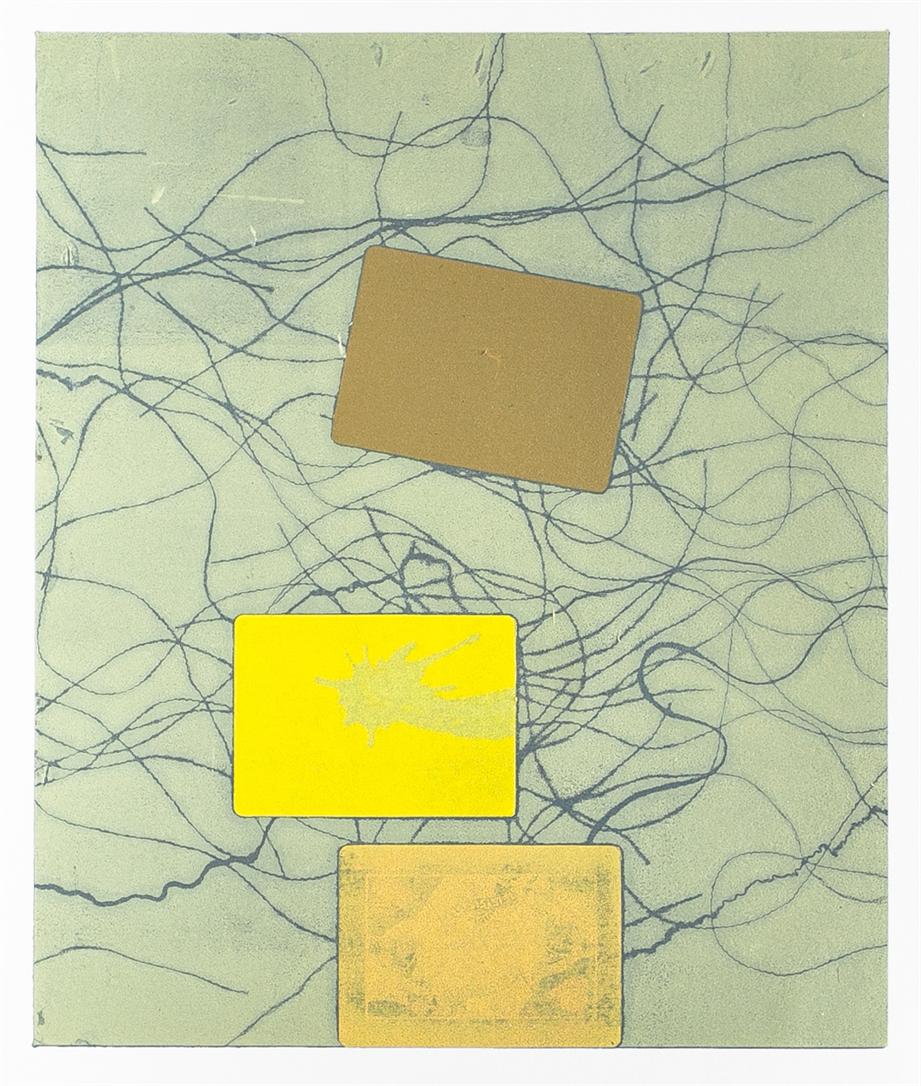 String. Playing cards. Water … and ink. That’s all Brenton Good needs to create a work of art, a unique print.
String. Playing cards. Water … and ink. That’s all Brenton Good needs to create a work of art, a unique print.
Good adds one color to the design at a time, lets it dry, adds another color and lets it dry again. “It’s a long time in between each color, but it allows you to react to each layer, building upon it, having a conversation with the piece,” Good said of his creative process.
The series, “Field Constructions,” displaying roughly half of the series’ total prints that present a progression of the process from 2012 to 2014, is on exhibit beginning next week at Elizabethtown College. The work will be hung around the gallery in a timeline-like progression. “Standing in the middle of the gallery, you will see the prints hung in order; see how they started…see new things introduced,” Good said. Visitors will experience new variables added into the prints, as well as the introduction of cutting of the playing cards. The first 20 pieces of this series can be viewed on Good’s website.
It’s a long time in between each color, but it allows you to react to each layer, building upon it, having a conversation with the piece.”
In addition to printmaking, Good also is a painter. Before focusing on his print series, he painted portraits. In portraits, unlike step-by-step printmaking, artists know the final product before it’s completed, he said, explaining the difference between the two artistic expressions. Some artists believe in the “holy trinity,” a never-ending circle of how drawing, painting and printmaking all make the other processes better, he said, noting that he believes he subscribes to that idea.
In printmaking, Good uses paper and panel. Paper, he said, provides a more delicate surface, while panels enable the artists to be more physical and scratch away at the ink. Finished paper prints must be matted and framed behind glass for display; panels can simply be framed showcasing the piece’s texture and depth. “Sometimes the glass reflection gets in the way,” Good said.
Often the artist is intrigued by scratching away at objects’ surfaces, he said. “I like the barn that’s been painted 20 times. As the paint peels you become aware of how old it is. … I like beautiful things that are also dirty; like, look at the beautiful purple in an oil slick, but don’t touch it.”
Primarily, Good’s inspiration is obtained from nature, as his images come from landscape. “It’s not copying nature, not a specific place, but the colors and effects seen in landscape,” Good said. “The process speaks of landscapes, without being landscapes. … It’s not abstracting something, looking at a horse or tree and making it abstract.” Instead, he focuses on the weight and number of cards placed on each piece. He said sometimes it’s about allowing string or water to drop wherever it goes.
Each of the artist’s series is provided a title with two or three meanings, allowing ambiguity and interpretation, he noted. All pieces of the series are simply named with the series title and then numbered in order. Additionally, Good discovers new series possibilities through the critical analysis of his existing work. “I like this one little part, maybe a three-inch square of one panel,” Good said. The artist lives with his work, and excitement evokes from finding new areas of exploration and opportunities to create something new, he said. “When you find these little moments, you jump on it.” This element of chance, as well as exploring new ideas, is explored in the name of the series–“Field Constructions.”
His works are inspired by a variety of movements and artists, Good said, admitting that his theoretical inspiration changes every couple of years. Currently, he draws inspiration from minimalism- and Bauhaus-inspired formalism, as well as Russian constructivism. He also likes the work of Josef Albers, who he referred to as “the color guy.” John Cage Jr., Brice Marden, Richard Diebenkorn, Lucian Freud and Max Beckmann all stimulate Good’s work. Additionally, he is inspired by literature and philosophy.
Good first began printmaking as an undergraduate student at nearby Messiah College, he said, describing the art as a process creating images unachievable by other artistic methods. Now, after earning two graduate degrees in Dallas, Texas, Good is back at his alma mater, but as an educator, not a pupil. He’s been teaching at Messiah almost a decade now.
“Field Constructions” begins Tuesday March 18 with an opening reception from 4 to 6 p.m. in the John W. Hess Gallery of Elizabethtown College’s Zug Memorial Hall. The reception includes an artist talk. The free exhibit continues 9 a.m. to 8 p.m. Monday through Friday, and 1 to 5 p.m. Saturday and Sunday through April 25.

